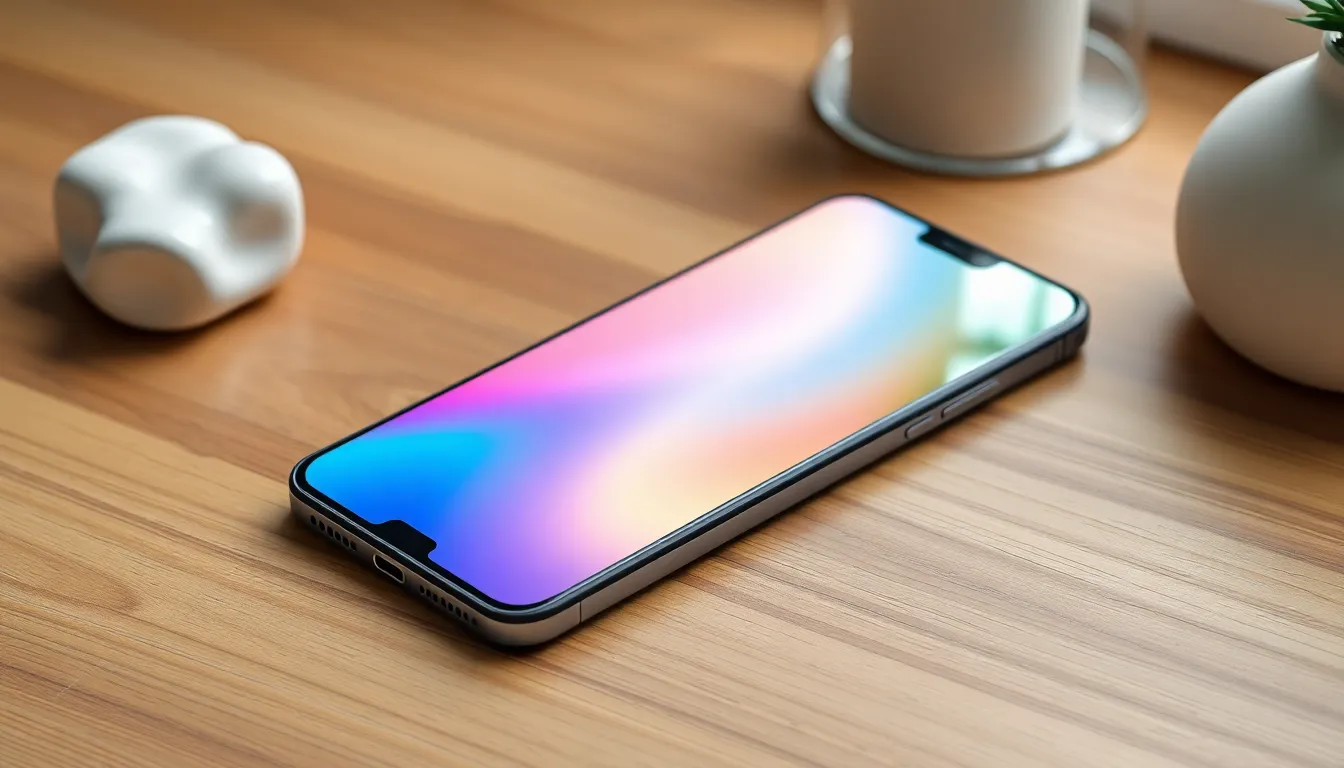Smartphone design trends are constantly evolving, shaping the way users interact with their devices. As technology advances, manufacturers push the boundaries of innovation, creating sleek, functional, and aesthetically pleasing smartphones. From foldable screens to minimalistic designs, these trends reflect not just consumer preferences but also advancements in materials and engineering.
In today’s fast-paced digital world, a smartphone’s design can significantly influence its market success. Consumers are increasingly drawn to devices that combine style with practicality. Understanding the latest trends in smartphone design can help tech enthusiasts and industry professionals alike stay ahead of the curve and make informed decisions. With that in mind, let’s explore the key design trends that are defining the future of smartphones.
Table of Contents
ToggleOverview of Smartphone Design Trends
Smartphone design trends continually evolve, driven by technological advancements and user preferences. Key trends currently shaping the industry include:
- Minimalism: Simple, clean designs characterize contemporary smartphones, focusing on essential features. Manufacturers prioritize sleek lines and subdued colors, appealing to users seeking elegance.
- Foldable Displays: Foldable smartphones gain popularity, allowing devices to offer larger screens while maintaining portability. This innovation enhances user experience by providing versatility for multitasking.
- Sustainable Materials: Environmentally friendly materials, like recycled plastics and metals, become integral in smartphone production. Brands adopt sustainable practices to cater to eco-conscious consumers.
- Ergonomic Design: Companies emphasize comfort by designing phones that fit naturally in hand. Curved edges and lightweight structures improve usability for extended periods.
- Camera Innovations: Advanced camera systems with multiple lenses and AI capabilities dominate design trends. High-quality photography attracts consumers, influencing their purchasing decisions.
- Integrated AI Features: Smart assistants and AI-driven functionalities are embedded into devices. Users benefit from personalized experiences and enhanced interaction.
- Vibrant Colors and Textures: Bold color options and unique textures contribute to personalization. Customization in aesthetics allows users to express individuality.
These trends reflect a blend of functionality and aesthetics, aimed at enhancing user interaction while addressing market demands.
Current Design Trends in Smartphones

Smartphone design continues to evolve, influenced by user preferences and technological advancements. Key trends currently reshape the landscape, showcasing a blend of practicality and aesthetics.
Minimalist Aesthetics
Minimalism dominates smartphone design, prioritizing simplicity and functionality. Devices feature clean lines, sleek finishes, and streamlined interfaces, eliminating unnecessary elements. This approach enhances user experience by promoting ease of use and visual clarity. Brands implement fewer buttons and simple color palettes to maintain focus on essential features, making the device intuitive and user-friendly. An example includes the use of bezel-less displays, which maximizes screen real estate while providing an elegant appearance.
Bold Colors and Patterns
Bold colors and patterns increasingly appear in smartphone designs, catering to consumers seeking individuality. Manufacturers incorporate vibrant hues, unique textures, and eye-catching graphics to differentiate their products. This trend encourages personal expression, allowing users to choose devices that reflect their styles. Brands regularly launch limited-edition variants featuring striking designs, appealing to fashion-forward consumers. Notably, prominent color trends like gradient finishes create a dynamic visual effect, further enhancing the aesthetic appeal of modern smartphones.
Innovations in Smartphone Materials
Smartphone manufacturers increasingly explore innovative materials to enhance aesthetics and durability. The integration of cutting-edge materials impacts overall device performance and user satisfaction.
Glass and Metal Combinations
Smartphones frequently feature glass and metal combinations, providing a premium look and feel. Manufacturers utilize aluminum frames for robust support while employing Gorilla Glass or ceramic for screens, ensuring scratch resistance and durability. The blend of materials enhances signal reception and offers a more sophisticated, sleek appearance. Devices such as the Apple iPhone and Samsung Galaxy series exemplify this trend, showcasing the effective use of glass and metal to appeal to consumers seeking both elegance and resilience.
Sustainable Materials
Sustainability plays a crucial role in smartphone design, prompting brands to adopt eco-friendly materials. Bioplastics, recycled aluminum, and organic materials reduce environmental impact and attract eco-conscious consumers. Companies like Fairphone lead the way by focusing on ethical sourcing and recycling initiatives. Additionally, biodegradable phone cases and sustainable packaging options reflect a growing commitment to environmentally responsible practices within the smartphone industry. This shift towards sustainable materials not only addresses consumer demand but also contributes to a more sustainable future in technology.
Future Directions for Smartphone Design
Emerging trends indicate a significant shift toward innovative designs that prioritize functionality and user experience. Key areas of focus include advancements in display technology and the integration of artificial intelligence.
Foldable and Flexible Displays
Foldable and flexible displays enhance versatility in smartphone design. These screens allow users to enjoy larger display areas without sacrificing portability. Significant manufacturers like Samsung and Huawei lead this trend, creating devices that feature multi-functional screens capable of transforming from compact sizes to larger formats. Bendable screens encourage new form factors, such as rollable designs that offer greater screen real estate while maintaining convenience. The continued development of OLED technology improves display durability and responsiveness, ensuring these innovative screens meet consumer demands for aesthetics and performance.
Integration of AI in Design
Integration of AI into smartphone design reshapes user interaction and personalization. AI features streamline device usage by adapting settings and preferences based on user habits. Voice and image recognition capabilities enhance functionality, allowing for more intuitive commands and interactions. Personalized user experiences arise from AI algorithms, which learn from individual behaviors to optimize app performance and battery consumption. Moreover, predictive analytics enable smartphones to anticipate user needs, refining their functionality. The incorporation of AI resources supports improved camera performance, security features, and user interface customization, creating devices that resonate with modern consumers’ preferences.
The landscape of smartphone design is rapidly evolving as manufacturers strive to meet the demands of modern consumers. With a focus on minimalism and functionality, devices are becoming more user-friendly while still offering striking aesthetics. The integration of sustainable materials and innovative technologies reflects a growing awareness of environmental impact and consumer preferences.
As trends like foldable displays and AI personalization gain traction, the future looks promising for smartphone design. Companies that embrace these changes will likely lead the market, offering products that not only look good but also enhance user experiences. The ongoing fusion of style and practicality will continue to define the next generation of smartphones, making them essential tools for everyday life.










